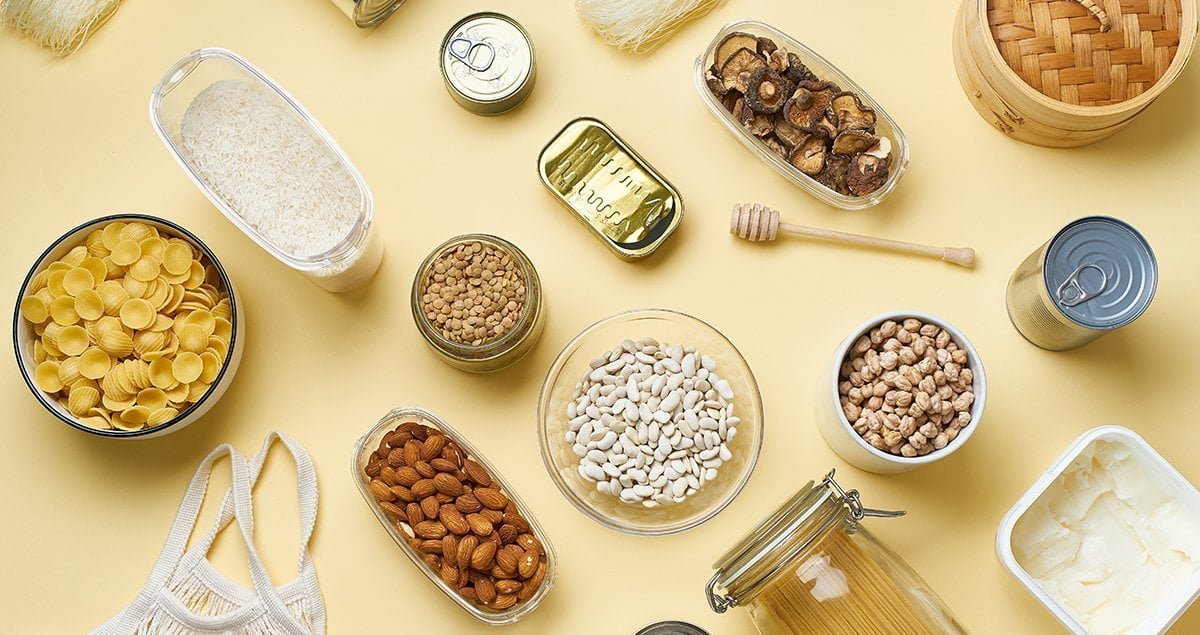Common Ingredients and their Uses

You enter your kitchen, open your refrigerator and take out a delectable assortment of ingredients to make your dinner. As you’re chopping shallots, you start thinking about how these simple ingredients combine to create something so wonderful. You start to get lost in wonder and you realise that you burnt the garlic that you left on the stove.
Well, put your mind at ease (and to avoid the loss of your precious garlic pods), we have put together a list that explains what everyday use ingredients (and some not-so-everyday use ingredients) do and how they enhance your dishes to look/taste better.
EVERYDAY INGREDIENTS AND WHAT THEY DO

Celery
Like coriander, celery is either eaten as a vegetable (stem included) or as a flavouring (only leaves) in several stocks, salads, soups and casseroles.
Commonly used in:
- Hot and Sour Soup
- Chicken Stir-fry

Celery
Like coriander, celery is either eaten as a vegetable (stem included) or as a flavouring (only leaves) in several stocks, salads, soups and casseroles.
Commonly used in:
- Hot and Sour Soup
- Chicken Stir-fry

Dark Soy Sauce
Dark soy sauce is basically over-fermented light soy. The extra fermentation helps develop the strong umami flavour and intensity but reduces the saltiness. Its strong flavour is why it should be used sparingly.
Commonly used in:
- Sweet and Sour Pork
- Kung Pao Chicken

Dark Soy Sauce
Dark soy sauce is basically over-fermented light soy. The extra fermentation helps develop the strong umami flavour and intensity but reduces the saltiness. Its strong flavour is why it should be used sparingly.
Commonly used in:
- Sweet and Sour Pork
- Kung Pao Chicken

Belacan
It’s shrimp paste pressed into a block. Like ginger, it has an unpleasant smell when unroasted, but once it hits the pan, it adds a beautiful depth of flavour to a number of dishes. It can be cut, wrapped in foil, placed over a flame using tongs and then cooled for optimum flavour.
Commonly used in:
- Prawn Sambal
- Nasi Goreng

Belacan
It’s shrimp paste pressed into a block. Like ginger, it has an unpleasant smell when unroasted, but once it hits the pan, it adds a beautiful depth of flavour to a number of dishes. It can be cut, wrapped in foil, placed over a flame using tongs and then cooled for optimum flavour.
Commonly used in:
- Prawn Sambal
- Nasi Goreng

Coconut Cream and Milk
Coconut cream and milk is made by grating the coconut flesh and mixing it with water. The mixture is then strained and pressed. The cream comes from the first level of extraction from the mixture, which is why it’s thicker. More water is added to the remaining flesh and pressed to produce the lighter coconut milk.
Commonly used in:
- Thai Green Curry
- Chendol

Coconut Cream and Milk
Coconut cream and milk is made by grating the coconut flesh and mixing it with water. The mixture is then strained and pressed. The cream comes from the first level of extraction from the mixture, which is why it’s thicker. More water is added to the remaining flesh and pressed to produce the lighter coconut milk.
Commonly used in:
- Thai Green Curry
- Chendol

Tomato Sauce
We’re all familiar with this quite well. It’s used to add richness and sweetness in sauces without increasing the heat.
Commonly used in:
- Chicken Cacciatore
- Penne Arrabiata

Tomato Sauce
We’re all familiar with this quite well. It’s used to add richness and sweetness in sauces without increasing the heat.
Commonly used in:
- Chicken Cacciatore
- Penne Arrabiata

Lemongrass
It’s a tall, bulbous grass, usually used to enhance the fragrance of a dish. It’s usually finely ground in paste form or used whole when making soups or steaks.
Commonly used in:
- Vietnamese Lemongrass and Chilli Steamed Fish
- Tom Yum Soup

Lemon Grass
It’s a tall, bulbous grass, usually used to enhance the fragrance of a dish. It’s usually finely ground in paste form or used whole when making soups or steaks.
Commonly used in:
- Vietnamese Lemongrass and Chilli Steamed Fish
- Tom Yum Soup

Palm Sugar
Palm sugar is made by extracting the sap of a palm tree. The sap is then boiled down and concentrated into moist sugar. Colourwise, it can range from dense bark brown to a light honey coloured hue. Palm sugar can be used as a substitute for cane (white) sugar for anything right from your hot coffee to the icing for your cake.
Commonly used in:
- Pad Thai
- Beef Rendang

Ikan Bilis
These are dried anchovies usually eaten only as a snack. They can be eaten on their own with sambal or can also be cooked with peanuts.
Commonly used in:
- Janchi Guksu (Korean Noodle Soup)
- Nasi Lemak with Sambal Chilli Ikan Bilis
Now that you’ve learned something new about a few common household ingredients, go put your knowledge to the test. Check out our KOKA Recipe eBook to find quick and simple instant noodle recipes and impress others with your knowledge of food.

Palm Sugar
Palm sugar is made by extracting the sap of a palm tree. The sap is then boiled down and concentrated into moist sugar. Colourwise, it can range from dense bark brown to a light honey coloured hue. Palm sugar can be used as a substitute for cane (white) sugar for anything right from your hot coffee to the icing for your cake.
Commonly used in:
- Pad Thai
- Beef Rendang

Ikan Bilis
These are dried anchovies usually eaten only as a snack. They can be eaten on their own with sambal or can also be cooked with peanuts.
Commonly used in:
- Janchi Guksu (Korean Noodle Soup)
- Nasi Lemak with Sambal Chilli Ikan Bilis
Now that you’ve learned something new about a few common household ingredients, go put your knowledge to the test. Check out our KOKA Recipe eBook to find quick and simple instant noodle recipes and impress others with your knowledge of food.
